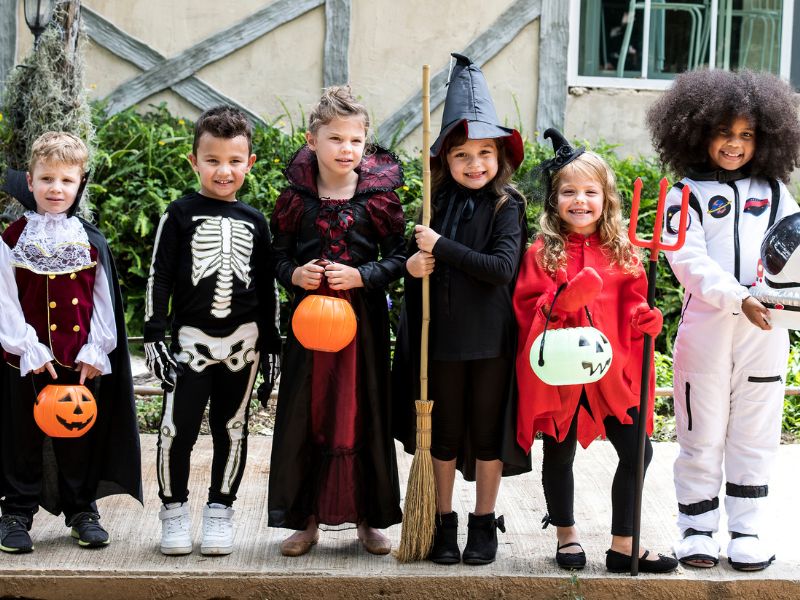How to Keep Kids Safe on Halloween
For decades, parents have heeded warnings of the dangers of trick-or-treating: myths and gross exaggerations about apples containing razor blades and poison-filled candy worry countless parents every Halloween. Experts, however, have debunked these mistaken notions and hoaxes. The one case in which a child’s candy was poisoned occurred in 1974. It turned out, the boy’s father poisoned the candy so he could collect on a life insurance claim. Since that time, there have been nothing more than a few false reports.
Stranger and acquaintance dangers
One risk to children on Halloween, or any time of year, is child predators. Although studies have shown the incidence doesn’t increase on Halloween, parents should still take precautions and educate their kids before they head out without adult supervision. To keep your kids safe from stranger and acquaintance dangers on Halloween:
- Young children should be attended by an adult when trick-or-treating.
- Older kids should trick-or-treat with a friend or preferably in a group.
- Tell your kids not to step inside the homes or cars of strangers or even acquaintances you haven’t pre-approved. Also, tell them what to say if they’re invited in, so they’re prepared. Your child can be direct and just say, “my parents told me I have to wait outside.”
- Give your kids a curfew, so you know what time to expect them home.
- Know what route they plan to take. Make sure it’s in safe neighborhoods, and they won’t have to walk through secluded areas to get there.
- Only go to houses with porch lights on.
- Have kids carry a cell phone, and make sure they know how to use it to dial 911.
- Add a tracking app to their phones, such as Family Tracker, Glympse, Footprints, FamilySignal or Life360.
Traffic and costume dangers
Keep props such as swords, short, soft and flexible to avoid injury to self or others.
Most risks to your child on Halloween are safety issues involving traffic and costumes. Have your kids follow these Halloween safety tips for a fun-filled evening without incident:
- Make sure costumes, masks and shoes fit well. Costumes shouldn’t drag the ground posing a tripping hazard.
- Avoid masks. Instead, use makeup and well-fitting hats or wigs, so vision isn’t obstructed.
- Avoid high heels.
- Try to find flame-resistant costumes, and make sure kids keep their distance from lit pumpkins and luminaries.
- If walking on roads, walk facing the oncoming traffic. Where possible, stay off the road completely.
- When crossing streets, use crosswalks if possible, and look both ways twice. If at a stop sign or light, make sure traffic comes to a complete halt before crossing.
- Don’t cross the street between parked cars or where drivers’ views might be obstructed.
- Carry a flashlight so cars and bicycles can easily spot you. Also, wear something reflective or add reflective tape to costumes and bags. Carrying a glow stick is another option.
- Keep props such as swords and knives short, soft and flexible to avoid injury to self or others.
- Don’t wear colored contact lenses unless they’re prescribed for the child wearing them. Otherwise, they can cause severe eye damage, even if they’re nonprescription sold solely to change eye color.
Safety tips for visiting trick-or-treaters
- Keep cords and tripping hazards out of your driveway and walkway.
- Use glow sticks or solar lights in pumpkins and luminaries rather than candles.
- Pass out sealed candy. Otherwise, many parents won’t allow their children to eat it.
- Keep pets away from trick-or-treaters. Costumes and excited children can scare pets and lead to unexpected behavior.
Related
Not-So-Spooky Halloween Movies

